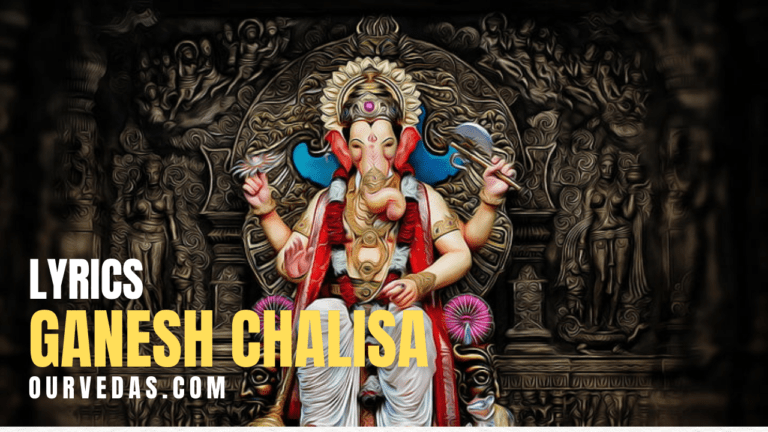Lord Ganesha’s Favorite Flower: Unveiling the Sacred Bloom
A symbol of devotion and prosperity, Lord Ganesha is one of the most revered deities in Hindu culture. Celebrated as the remover of obstacles and the god of beginnings, he is often pleased with various offerings, particularly flowers. Each blossom holds deep meaning, making them an integral part of worship. What is the favourite flower of Lord Ganesha? This question leads us into an exploration of both traditional and symbolic dimensions.
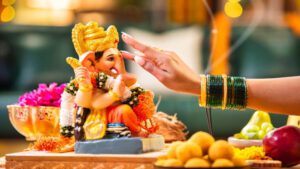
Join us on an enchanting journey as we explore not just what flowers grace Lord Ganesha’s altar but also delve into their deeper symbolism within Hindu culture. From red blossoms that echo love and passion to other auspicious picks revered across different regions in India, let’s uncover the floral offerings that enhance our spiritual connection with this magnificent deity.
The significance of flowers in Hinduism and Lord Ganesha‘s connection to them
Flowers play a vital role in Hindu worship. They embody beauty, purity, and devotion. Each flower carries specific meanings and energies, impacting the rituals performed. Notably, they are used in puja (prayer rituals) to please deities. The vibrant colors and fresh fragrance enhance the spiritual atmosphere, fostering a deep connection between the devotee and the divine.
The act of presenting flowers to Ganesha signifies surrendering one’s troubles and aspirations at his feet. Such gestures create a deeper connection between the devotee and divinity.

Different types of blooms resonate with various aspects of life—joy, prosperity, or wisdom—making them integral to worship practices dedicated to Lord Ganesha. This floral tradition enhances spirituality while fostering a sense of community among devotees across India.
Ganesha’s Iconography and its Symbolic Meanings
Ganesha’s imagery reflects his characteristics. His elephant head signifies wisdom, while the rounded body symbolizes abundance. The various items he holds—like a modak (sweet) and a rudraksha berry—represent material and spiritual nourishment. Understanding these symbols helps devotees choose appropriate offerings, including flowers.
Exploring the Mystery Surrounding Ganesha’s Favorite Flower
When it comes to Ganesha’s favorite flower, two contenders often come to mind: the lotus and the red hibiscus. Each flower offers unique associations that resonate with his divine qualities.
The Lotus: A Popular Contender
In Hindu culture, the lotus represents purity rising from muddy waters. It’s often associated with divine beauty and spiritual awakening. This vibrant flower holds a special place in worship, especially for deities.
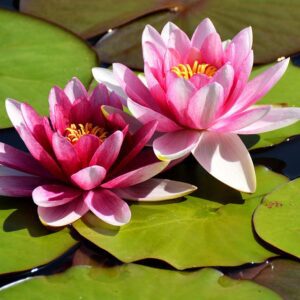
Many depictions show Ganesha holding or surrounded by lotus flowers. It is believed that lotus is the favourite flower of Lord Ganesha. Artworks and temple carvings highlight this relationship, reinforcing its association with purity and devotion.
Myths often narrate how deities emerge from lotus flowers, symbolizing rebirth and creation. Given Ganesha’s role as a creator and remover of obstacles, the lotus resonates beautifully with his qualities.
The Red Hibiscus: Another Strong Possibility
Red hibiscus flowers symbolize strength, power, and passion. They are often associated with goddess Kali and other powerful deities, giving them significance in various rituals.
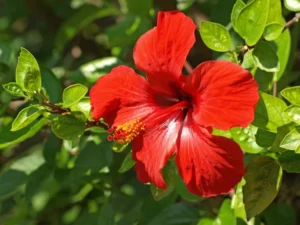
In many regions, devotees specifically offer red hibiscus to Ganesha. It is often considered as favourite flower of lord Ganesha. This act is thought to invoke his blessings for strength and prosperity. The striking color also captures attention, representing fervent devotion.
The red hibiscus is not just any flower; it signifies the drive to achieve. By offering it to Ganesha, worshippers express their desire for success in endeavors, making it a fitting floral tribute.
Beyond the Lotus and Hibiscus: Other Potential Favourites
Different parts of India and beyond feature diverse floral offerings to Ganesha. For instance, certain regions may prefer marigolds or jasmine, showcasing local traditions and customs.
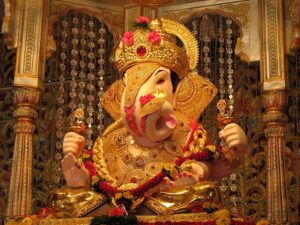
Interpretations of flowers can vary widely. While some flowers symbolize purity in one culture, they may represent love or friendship in another. The beauty of offerings lies in their diverse meanings.
Ultimately, the choice of flowers reflects personal devotion. A devotee might feel a strong connection to a specific bloom, enhancing their spiritual experience. This personal touch enriches worship and deepens the bond with Ganesha.
The popular belief of red flowers being Lord Ganesha’s favorite
Red flowers hold a special place in the hearts of devotees when it comes to worshipping Lord Ganesha. The vibrant color symbolizes love, passion, and auspiciousness—qualities closely associated with this revered deity.
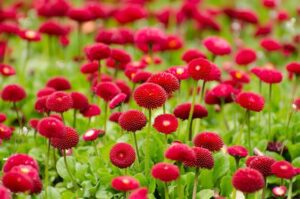
Many believe that offering red flowers pleases Ganesha, inviting his blessings for new beginnings and prosperity. It’s common to see bright red hibiscus or roses adorning altars during festivals like Ganesh Chaturthi.
This tradition is deeply rooted in cultural practices across India. The striking hue not only captures attention but also signifies strength and vitality.
Devotees often choose these blooms for their rituals, hoping to gain favor from the remover of obstacles. Each petal represents devotion and reverence toward Lord Ganesha’s divine presence.
Other flowers that are also considered auspicious for offering to Lord Ganesha
While red flowers hold a special place in the devotion to Lord Ganesha, several other blooms are also deemed auspicious for offering. White jasmine, with its delicate fragrance, symbolizes purity and spiritual awakening. This flower enhances devotion during prayers.
Marigolds are another favorite. Their vibrant hue represents prosperity and good luck, making them ideal for worship at festivals like Ganesh Chaturthi.
The lotus flower carries deep significance as well. Associated with divine beauty and enlightenment, it reflects Ganesha’s ability to rise above challenges.
Another notable mention is the hibiscus flower. Often seen in rituals dedicated to Ganesha, it signifies fertility and abundance—qualities that resonate deeply with devotees seeking blessings for new beginnings.
Each of these flowers brings unique energy and meaning to offerings made at the feet of this beloved deity.
The symbolism behind each of these flowers and how they relate to Lord Ganesha
Each flower offered to Lord Ganesha carries unique symbolism that resonates deeply with his qualities. For instance, red hibiscus is often seen as a symbol of devotion and strength. Its vibrant hue reflects the energy and enthusiasm devotees bring when worshipping.
Marigolds, on the other hand, represent prosperity and auspiciousness. Their bright yellow and orange shades are believed to attract positive energies, aligning perfectly with Ganesha’s role as the remover of obstacles.
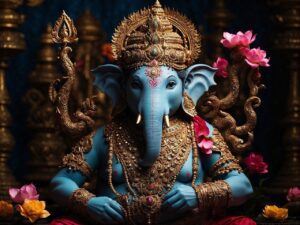
The fragrant jasmine embodies purity and divine love. When offered to Ganesha, it symbolizes the sweet surrender of one’s heart in prayer.
Lotus flowers signify enlightenment and spiritual awakening. Given their connection to wisdom, they resonate with Lord Ganesha’s attributes of intellect and learning.
The Practical Significance of Offering Flowers to Ganesha
When selecting flowers for puja, consider freshness, fragrance, and local customs. Opting for vibrant and pure blooms can enhance the spiritual atmosphere significantly.
Before offering flowers, make sure they are clean and free from pests. Some devotees prefer to chant prayers while arranging the flowers, infusing the offerings with deeper intention.
Offering flowers with genuine respect brings purity of heart to the ritual. This act not only honors Ganesha but also instills a sense of peace and satisfaction in the devotee.
How different regions in India have their own preferred flower for worshipping Lord Ganesha
India’s rich tapestry of cultures reflects in the diverse flowers offered to Lord Ganesha across regions. In Maharashtra, the vibrant red hibiscus is a favorite. Its bold color symbolizes strength and devotion.
Travel to Tamil Nadu, and you’ll find that jasmine reigns supreme. This fragrant flower embodies purity and grace, making it an ideal offering for divine connection.
In Gujarat, devotees favor yellow marigolds during Ganesh Chaturthi celebrations. These cheerful blooms represent prosperity and are believed to attract positive energy into homes.
Meanwhile, in West Bengal, white lotus holds significance due to its association with spirituality and enlightenment. It signifies the quest for knowledge—an essential aspect of Ganesha’s wisdom.
Each region’s choice reflects local beliefs and traditions while honoring Lord Ganesha in unique ways through nature’s beauty.
The cultural and historical significance of these flowers
Flowers hold a profound place in Hindu worship, especially when it comes to the veneration of Lord Ganesha. Each flower carries its unique symbolism and history that enriches the spiritual practice surrounding this beloved deity. Favourite flower of Lord Ganesha is used in various poojas.
Traditionally, red flowers have been favored for offerings to Lord Ganesha due to their vibrant hue and association with auspiciousness. They symbolize love, purity, and devotion—qualities essential in seeking blessings from Ganesha. However, other flowers like marigolds and jasmine also find their way into these rituals. Marigolds represent warmth and positivity while jasmine embodies humility and grace.
The cultural significance varies across different regions of India. In Maharashtra, for instance, yellow flowers are particularly popular during Ganesh Chaturthi as they resonate with joyfulness associated with festivities. Meanwhile, South Indians might prefer fresh white petals that signify cleanliness and sincerity in their prayers.
Historically speaking, many of these practices can be traced back centuries where local flora was integrated into temple offerings based on availability or specific agricultural customs prevalent at the time. As such traditions evolved over generations, they now reflect not just religious beliefs but entire ecosystems intertwined with cultural identity.
By understanding the favourite flower of Lord Ganesha alongside its broader implications within Hindu customs, we gain insight into how nature intertwines beautifully with spirituality—creating a tapestry rich in meaning for devotees everywhere.
Conclusion: Embracing the Symbolism of Floral Offerings to Ganesha
Key Takeaways on Ganesha’s Preferred Flowers
The sacred blooms of Lord Ganesha hold profound meanings, with the lotus and red hibiscus as popular choices. Each flower symbolizes different attributes, connecting devotees to the divine in unique ways.
The Deeper Meaning of Devotion and Symbolic Offerings
Offering flowers goes beyond mere ritual; it embodies love, gratitude, and respect towards Ganesha. This heartfelt connection enhances the spiritual experience.
Encouraging Further Exploration and Research into the Topic
The topic of Ganesha’s favorite flowers invites continued exploration. Delve deeper into your own traditions and experiences to discover what resonates most with your spiritual journey. Embrace the beauty and symbolism of floral offerings as a means to connect with the divine.





